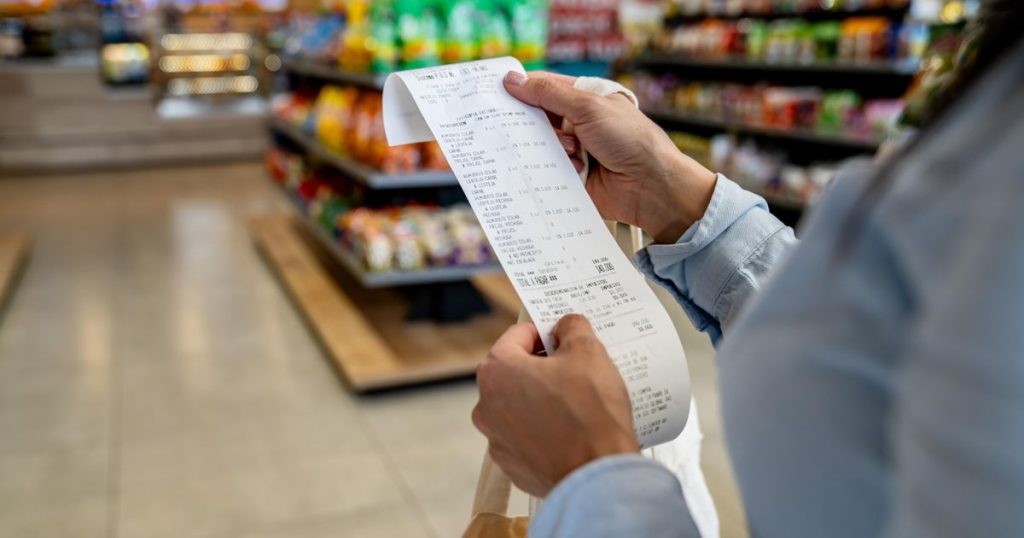Recent government reports have shown that inflation in the U.S. has slowed down, indicating a potential cooling off of consumer spending. As tariffs implemented during the Trump administration have yet to significantly impact prices, analysts are closely monitoring economic trends. This article delves deeper into how inflation rates, consumer spending, and tariffs correlate in the current economic landscape.
| Article Subheadings |
|---|
| 1) Current Inflation Trends |
| 2) Shifts in Consumer Spending Habits |
| 3) Impact of Tariffs on Prices |
| 4) Economic Implications of Inflation Rates |
| 5) The Future of Tariffs and Consumer Behavior |
Current Inflation Trends
The latest report from the Commerce Department indicated that the U.S. experienced a 2.1% rise in consumer prices in April compared to the same month the previous year. This figure marks a decrease from March’s inflation rate of 2.3%, showcasing the lowest level of inflation since September. Analysts particularly pay attention to core prices, which exclude volatile food and energy costs; these rose by 2.5%, down from 2.7% a month earlier and marking the lowest increase in over four years. This data is pivotal as it not only shows consumer price growth but also reflects changing inflationary pressures since the post-pandemic peak in July 2022, when inflation reached a 40-year high.
Shifts in Consumer Spending Habits
The pattern of consumer spending indicates a slowdown, with total consumer expenditure rising by only 0.2% in April, a significant decline from the robust growth of 0.7% experienced in March. The report observed that consumers are becoming more cautious, potentially in response to the higher prices brought about by tariffs on imported goods. The April data also highlights a decrease in spending on durable goods, which could signify that consumers are altering their purchasing habits due to price increases. This cautious sentiment is indicative of an underlying apprehension among consumers regarding future expenses.
Impact of Tariffs on Prices
The introduction of tariffs as part of former President Trump’s trade policy has stirred considerable debate among economists and business leaders. While these tariffs are intended to protect domestic industries, there is concern regarding their long-term impacts on prices. Recent statements from retail giants like Walmart indicate that price increases are imminent. They announced plans to raise prices for numerous products within the coming months due to the additional costs imposed by the tariffs. This sentiment is echoed by Best Buy’s CEO, who mentioned that price hikes would be necessary “as a last resort.” As these tariffs take effect, their influence on consumer prices will be a crucial factor to monitor.
Economic Implications of Inflation Rates
Despite the good news in the form of decreasing inflation figures, there remains considerable pressure on the Federal Reserve to maintain a vigilant stance. Fed officials have noted that inflation remains above their target rate of 2%, which they view as optimal for economic stability. Following their recent meeting, the consensus leaned towards holding interest rates steady for the time being to assess how the economic landscape will shift in response to tariffs. There are mixed feelings among economists regarding how these rates will affect job markets and consumer behavior moving forward.
The Future of Tariffs and Consumer Behavior
The legal battle surrounding tariffs remains dynamic, as recent court rulings have deemed many of Trump’s tariffs unlawful, which includes duties on imports from several countries. Although these tariffs are not completely lifted, the legal status raises questions regarding their long-term durability. According to administration officials, they are prepared to explore other legal channels to implement tariffs if necessary. Consequently, the future of these tariffs will likely continue to be a major influence on consumer behavior and overall economic trends as uncertainty lingers regarding their potential rollback.
| No. | Key Points |
|---|---|
| 1 | Inflation has decreased to 2.1%, the lowest since September 2022. |
| 2 | Consumer spending rose by only 0.2% in April, down from 0.7% in March. |
| 3 | Tariffs imposed under the previous administration are starting to affect consumer behavior. |
| 4 | The Federal Reserve remains cautious about inflation, keeping key interest rates steady. |
| 5 | Legal rulings on tariffs remain fluid, leading to uncertainty in consumer pricing trends. |
Summary
The recent decline in the U.S. inflation rate along with a slowdown in consumer spending presents a complex picture of the current economic landscape. As tariffs continue to exert pressure on prices, businesses are indicating forthcoming price increases, which could further influence consumer behavior. The interplay of inflation rates, tariffs, and consumer spending will be critical to watch in the coming months, as uncertainty surrounding economic policies and inflationary pressures remains high. Analysts and policymakers alike will need to navigate this intricate scenario to foster a stable economic environment.
Frequently Asked Questions
Question: What are core prices?
Core prices are a measure of the price level that excludes volatile items such as food and energy, providing a clearer indication of underlying inflation trends.
Question: How do tariffs affect consumer prices?
Tariffs raise the costs of imported goods, which can lead to increased prices for consumers as retailers seek to maintain profit margins.
Question: What should consumers expect in the coming months regarding inflation?
Consumers may experience mixed trends in inflation, as potential price hikes due to tariffs could counteract recent declines in overall inflation rates.


